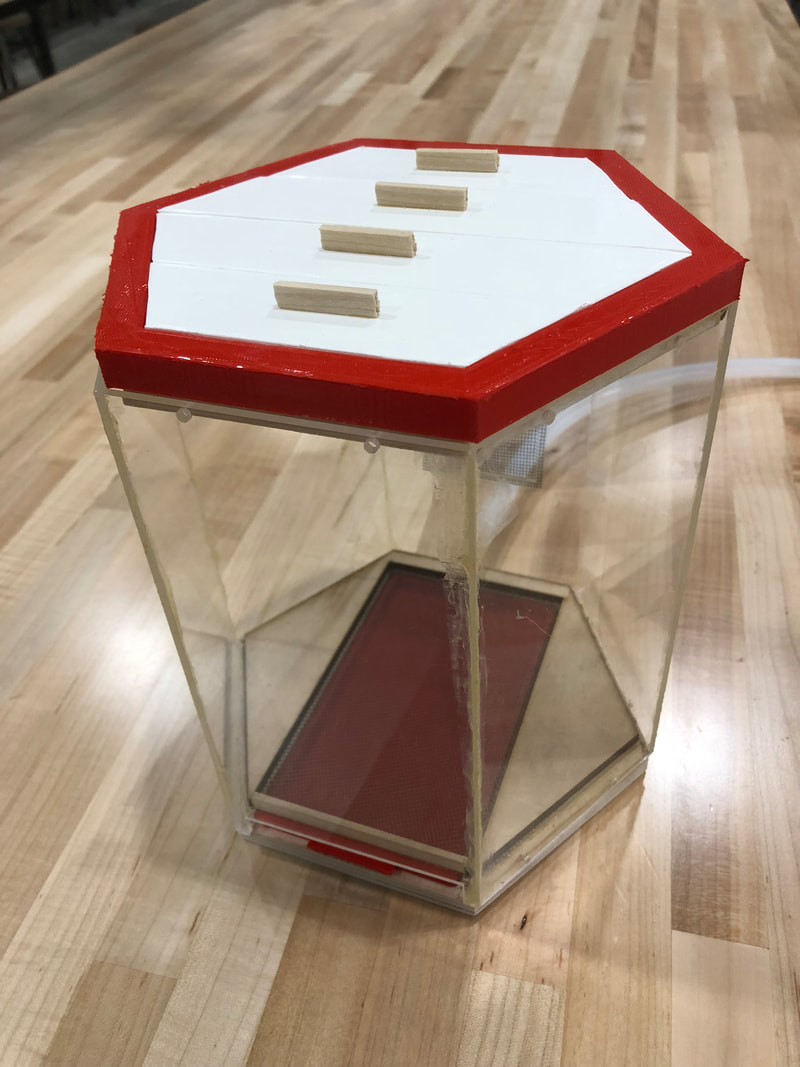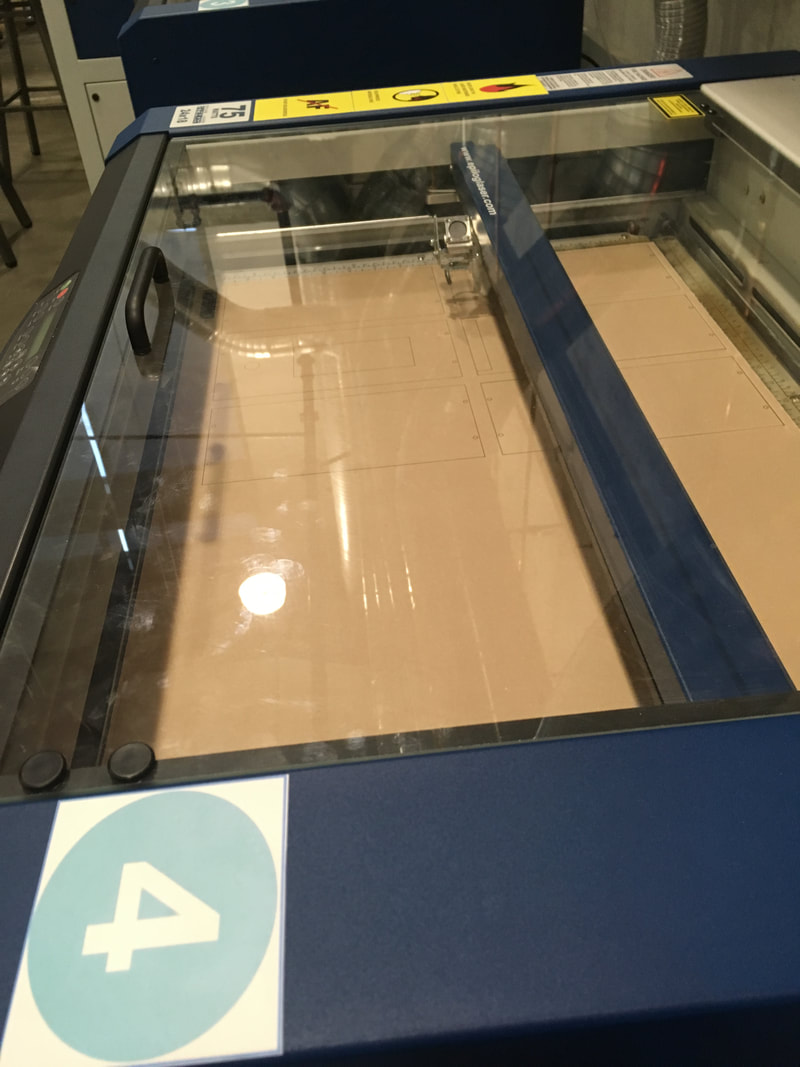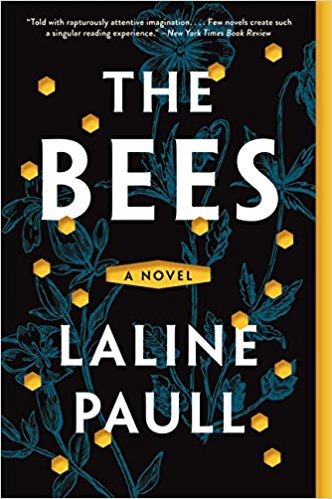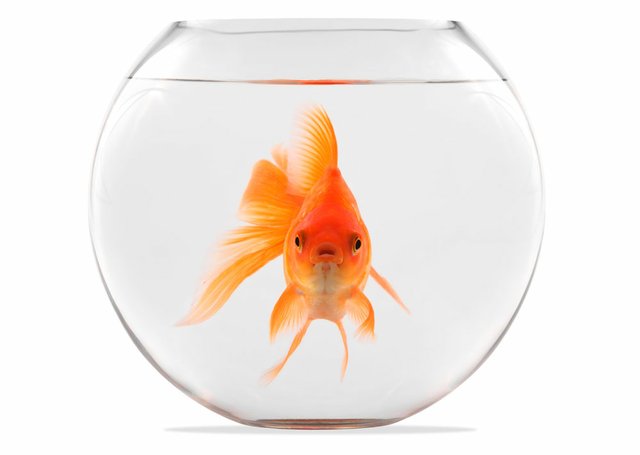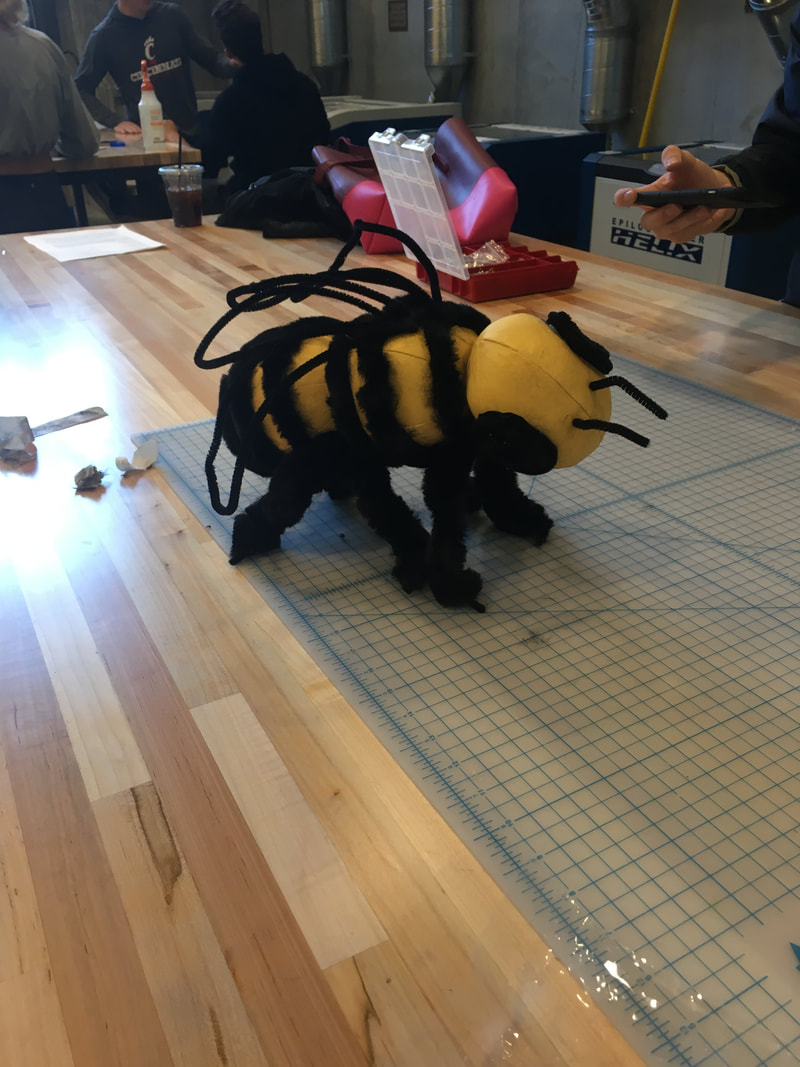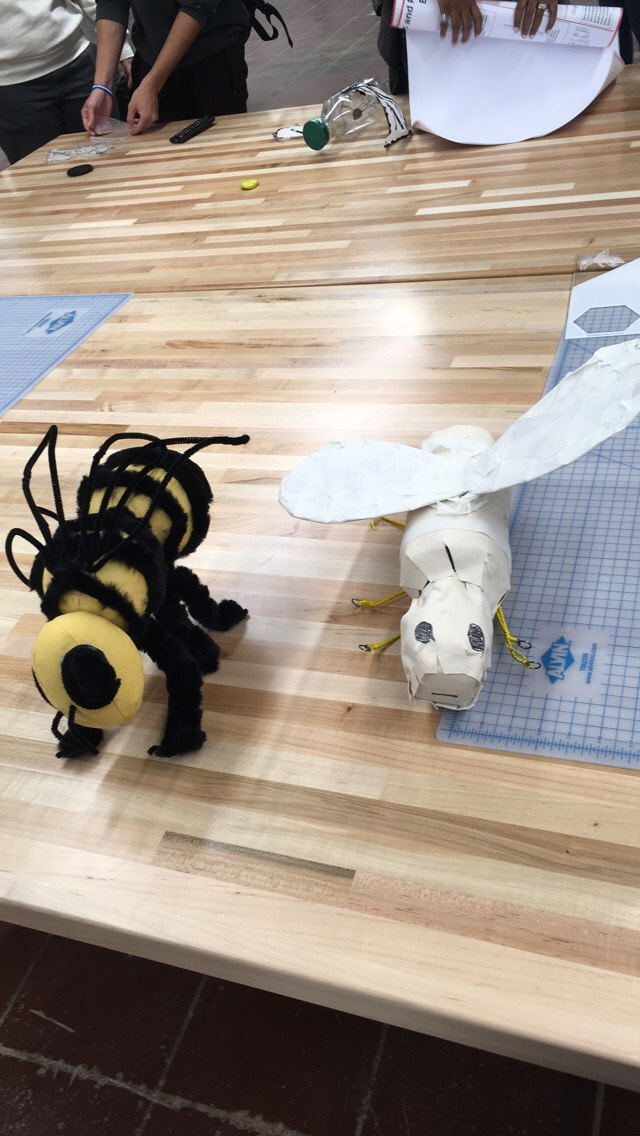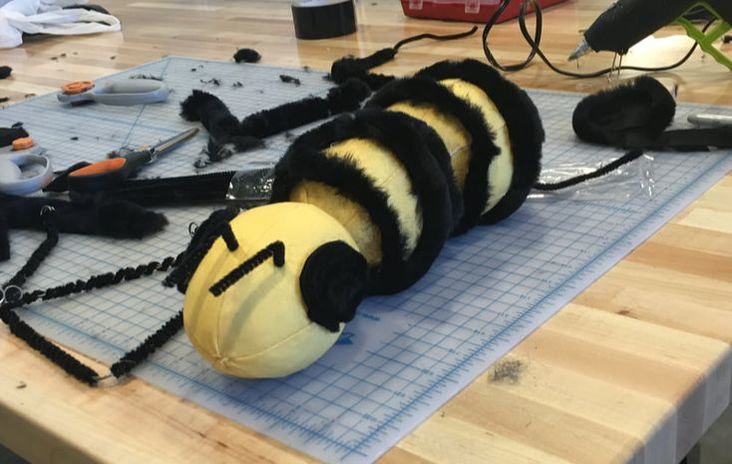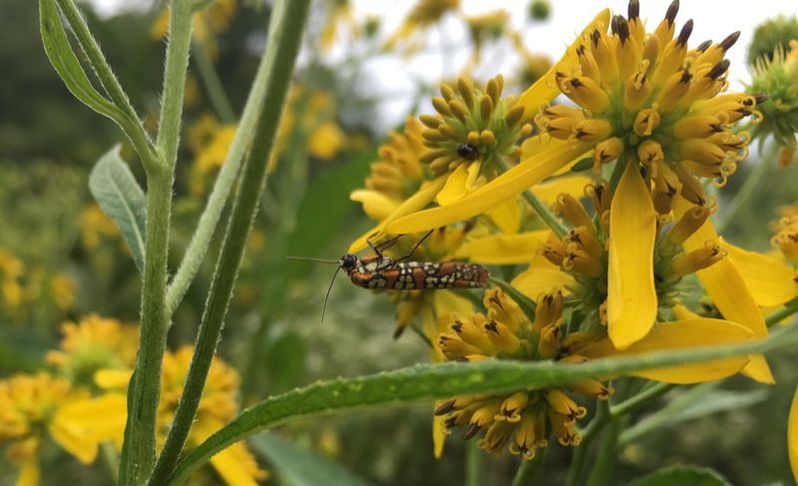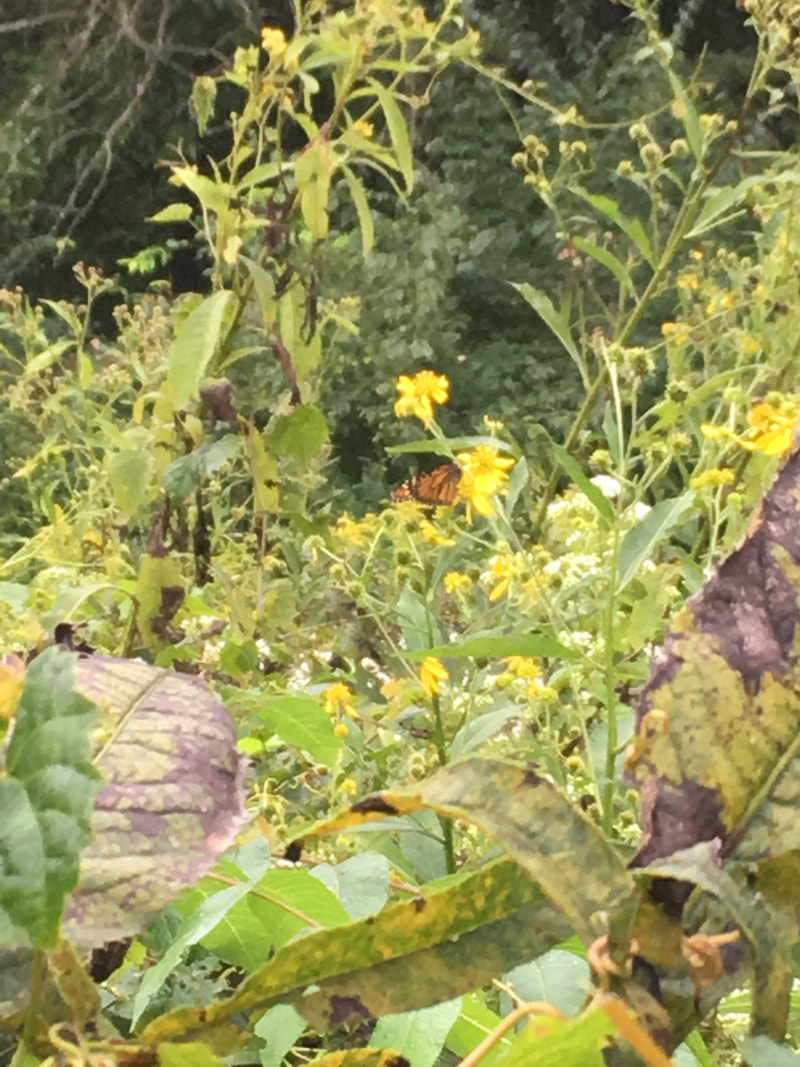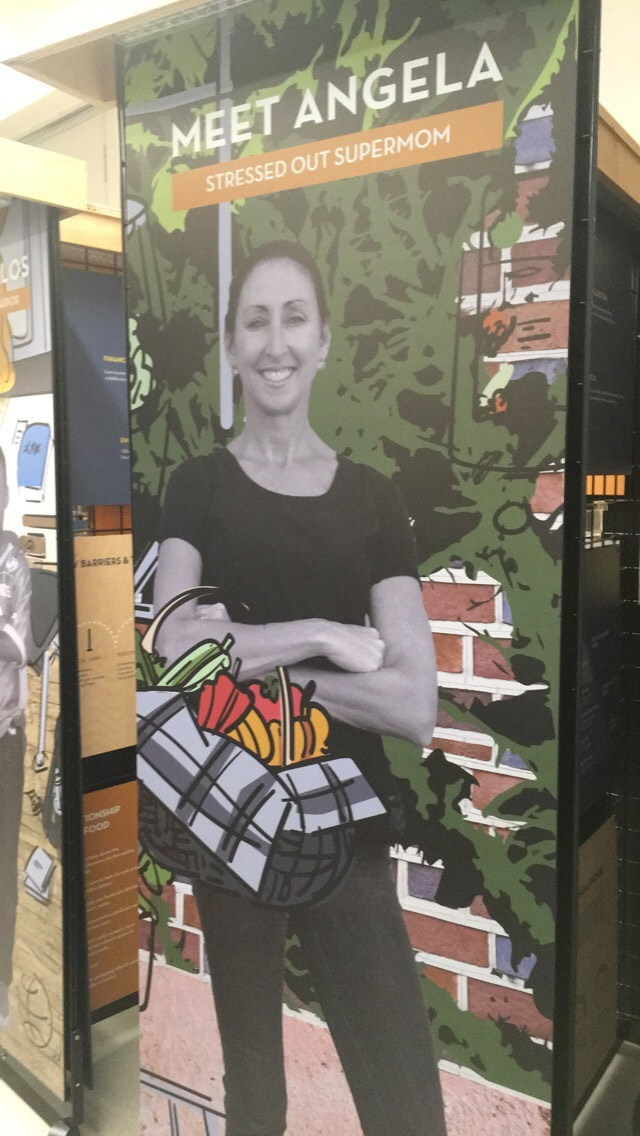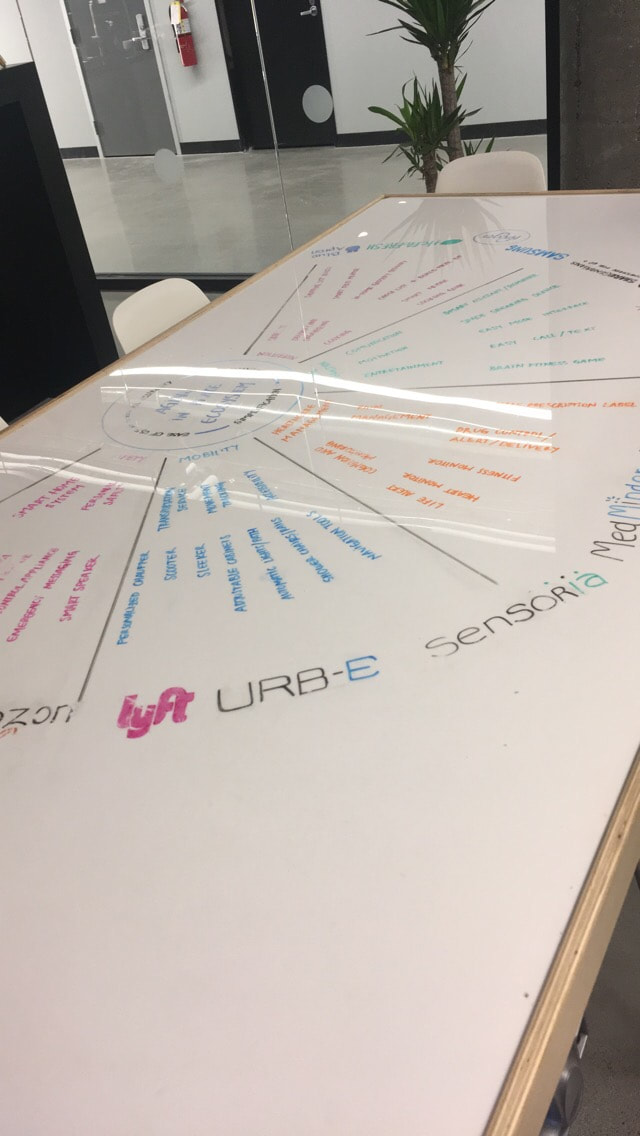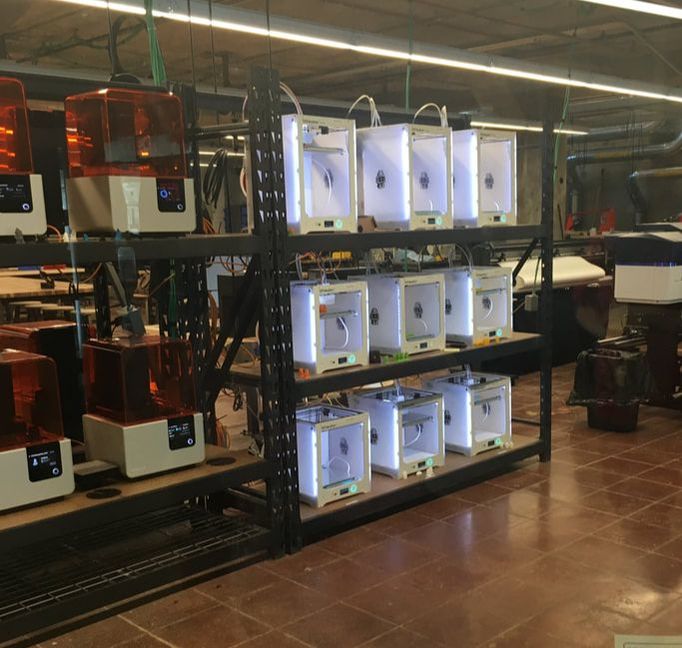Reflection Page for Sticky Innovations
Sticking innovations well they are the experience based around breaking down the barriers between disciplines to better be able to investigate and problem solve. We focused on doing arts based research which is where you are using art in various form to learn and investigate new ideas. An example of this is our project which is designing an ideal bee. This project combine research involving books we had read, videos we had watched, and background knowledge on bees to see how you would hypothetically redesign a bee if that was possible. My group focus on making bees less susceptible to mites, and the winter chills. We did this by making the bee have stronger skin and have longer legs wish based on her previous knowledge and what we learned would improve its function the Internet isn't planning a part comes in wouldn't be showcased how we do that to do that we created and sewed a 3D bee stuffed animal using muslin fabric, to show the strength of the skin. By allowing such unusual forms of displaying a project, every was able to make something completely unique using different skills. Different projects include things such as a wooden bee, 3D printed bees, to engraved internal intestines.
Final Project
|
For the final project my group decided to take on the wicked problem colony collapse disorder and the current state of the bees by helping make bees more accessible and more accepted. We attempted to do this by creating an indoor beehive that would be easily purchase and implemented by people in all living conditions.
For our beehive we wanted something that would be cheap, easy to install, and aesthetically pleasing to look at. After doing market research, we decided to do a hexagon shape to make a beehive structure and to make a top bar hive to allow the collection of honey as many people feel that is an important part of keeping bees. From there we decided to have a way to have the indoor beehive be connected the outdoor world through the windows instead of drilling through a wall and have it on a table instead of mounted to allow those in apartments to be able to keep bees. |
|
A lot was learned through the process of making this beehive. Originally it was to be connected using screws, as mechanical fasteners tend to last longer then glue. From there we do we decide to have acrylic sides for to allow full visibility for the bees along with having several pieces on the top that were able to be removed to allow collection of honey. One challenge we face was figuring out how we are going to have a source of food for the bees, as most bees anymore food supply is augmented throughout the winter. We decided to have a removal drawer that started dual purpose of allowing bottom of the beehive to be easily cleaned and it could be used to administer sugar water.
|
|
The actual building of the hive ran into several problems. We had issues scheduling time at the 1819 building for the CNC machines, as they did not have much time available. We ended up deciding to 3D print one with parts which created issues as the 3D printer was only able to print out 98% size due to the size of the print bed. This led to some stack up error with our sides being slightly too large to fit on the piece of comfortably, causing us to end up glue the pieces together instead of using screws.
I feel like soon as project I learned a lot about how to make prototypes. Real building as opposed to just designing is filled with little decisions that cause you to have to think and figure out the best way to do things. Nothing ever goes together correctly on the first try and that was evident in our issues putting together a beehive. Walking away from this project I feel more confident in my ability to problem solve how things are made. |
Fish Bowl
For this project, I read the fictional book bees by Laline Paull as a research book. It was told from the point to view of Flora 717, a sanitation bee who throughout her life went through many different phases. It was interesting to me, because as a fictional book it took a lot of liberties but still highlighted in many aspects of a bee’s life. Personally, I feel like this book was a form of research and I learned a lot about bees from it and I'm more so about the bee’s lifecycles and what possible roles they can go through and how their society is set up.
Project here
Project here
|
There were two sides to the fishbowl reflection. The first side that I experience, was sitting there listening to other people present. For me this was slightly frustrating to do because I am informed on the issues being discussed and have opinions on them and thus, I wanted to speak. For the first question the animal rights of bees were debated. It was really hard for me to stay quiet when someone mentioned that capitalism was the worst thing that ever happened. Recognizing that capitalism is imperfect, I feel like for our society is what works and would be hard to switch away from it. When she went on to say that she wasn't pro communism just push it into capitalist, I almost laughed out loud. It was interesting to be in the situation where things that I was highly informed about were being discussed without my input as it really forced me to listen and be more attentive when my classmates were talking instead of just trying to come up with an intelligent question. During the same question, one of the group members mentioned that many amphibians become extinct before we realize there are endangered as they are one of the least watch class in animals. That helped put the lack of people’s knowledge in bees in perspective and if this was a group discussion, may have got overlooked as each person would have less time.
|
|
For the second part of this discussion, I was part of a group discussing ecological services being provided. For me, this question brought up lot of good points as humans in bees have a complicated relationship that is in ways both symbiotic and slightly parasitotic in terms of how we treat bees. As I was only one of six presenters talking for 25 minutes, I really felt like a time to discuss my opinion and thoughts on the question. Overall, I enjoyed the experience of the fishbowl discussion, and felt like it was a good way to get across the information as it allowed everyone a chance to speak while having the rest of the class’s full attention.
|
Changing Bees
|
This project is based on using previously gained knowledge to help look at bees and see what changes we made to help him better be fit for their environment or face the current challenges facing them. My group found out the two big issue for bees was one the varroa mite and the winter.
The varroa mite burrows into the bee’s abdomen, and then infects the bees blood. Bees have no veins, and so once infected, they are quickly sick. To address this problem what we thought was the best solution was to give the bee thicker skin. This would make it harder for the varroa mite to get into the bees Additionally, beehives with good cleaning habits tend to have less issues with the varroa mite then beehives that do not have good cleaning habits, so we thought that adding away for the bees to better remove the varroa mite would be helpful. To do this we added hooks to the end of the bees’ feet and made their legs longer. This would allow them to more easily remove the varroa mite from other bees’ backs. |
|
To address the issue of bees being cold in the winter we felt that having a bee that’s furrier would help. This would also allow bees to stay warmer in the winter, and because of that, be able to forage for food longer into the fall. Additionally, the hair they are covered is also used to gather pollen; therefore, an additionally benefit would be the fact that bees could collect more pollen.
Making this bee was a bit of a challenge. Since we pick some difficult things to show such as skin sickness and fluffiness, we decided the best way to showcases be in the changes made to it or through using cloth bee. One of our group mates sewed together be body out of canvas, which is a strong fabric that is thicker and harder puncher than most fabrics to showcase the thicker skin. We then added strength of fluffy black material to show the additional fur. The legs were made of pipe cleaners and wire, which was then wrapped in the fluff. |
|
Overall this was a fun project to do. I feel like my group really tried to find ways to creatively show how our change could help the bee and just basically felt like time doing arts and crafts which was a really great break from the typical and engineering homework. This project allowed us to be creative in what we were doing while finding a way to help bees. The solution that we came up with was not something that could easily be implemented, but made us think about different ways that we could help bees . I feel like this will help us going into our next project as now we have spent time thinking and analyzing issues from a nontraditional format.
|
Green Acres Farm
|
Walking into Green Acres Farm, I felt like I was stepping back in time. My eyes were immediately drawn towards the old barn, sitting next to the gravel path, with a backdrop of fields. My expectations for this trip were that the visit would consist of us briefly talking about bees and then seeing the beehives on site, as Green Acres has three beehives; however, as we were shepherded into the barn to watch a video describing the bee’s waggle dance, I learned quickly I was wrong.
|
|
While there, we went on a walk through the yellow flower filled fields, looking for various pollinators. Interestingly enough, the native species of flowers tend to attract more pollinators then the invasive species. We discussed how bees can see in ultra violet and how due to that some flowers actually have designs on them to help lure the pollinators to them. This was shocking because I would have thought that generally, pollinators would go for whatever they could find. This was really a unique experience because while I have gone hiking before, I have never taken that much time to just look for bugs. It made me slow down and consider what it takes for flowers to be pollinated.
This experience has brought to light the class discussions on the overall state of the bees. It is one thing to talk about how bees are dying, it is entirely different to see it happening. Green Acre Farms typically has four beehives; however, they had lost one beehive this year and out of the remaining, one was not well enough to take honey from. Some follow up questions I have are: What steps are beekeepers taking to keep bees healthy? Besides bees, what is the biggest pollinator? What is keeping farms from trucking in another type of pollinator? |
Livewell 1819
|
Livewell Building 1819 was a unique experience because of its different approach to solving problems. They believe in a multi-step approach to solving problems, with a large value placed on trial and error. They have three main phases, with the three main phases being research, ideation, and refinement. This was surprising because, for the most part, the process for coming up with solutions begins with ideas and then segues into research as a way of confirming the already thought up ideas. Personally, I really liked this emphasis into researching the problem in depth before beginning to try and come up with new ideas. It shifts the focus of the research from being about reaffirming biases to figuring out how the problem actually is before settling into work.
|
|
The thing that I think was most inspiring about Livewell was their commitment to figuring out what people need. This was shown through their treatment of Childrens Hospital’s problem with people aging out of the foster system. The basic problem is that children with various conditions age out of the foster system and then are essentially, when it comes to healthcare, without information or guidance. Livewell was asked to design an app so they could have basic support and easy information. After researching, it was determined that an app would not be helpful because this demographic does not always have a smart phone, so an alternate solution of a booklet was created. This was portable and was more accessible to a vulnerable population. This is applicable not just for this class, but across the board as it really highlights that the solutions are not necessarily what we expect them to be.
|
|
The makerspace was absolutely beautiful. It had such a wide variety of machines and tools you could use. I honestly am really excited about having access to a lathe, as it was something that I used to do but now only have limited access to. Overall I feel like this is a space I will utilize and could utilize for the 3D printing of the ideal bee.
The main takeaways from this visit are: How can I approach my project with a sense of inquiry? How does who is implementing/being affected by the solution change the solution? |
